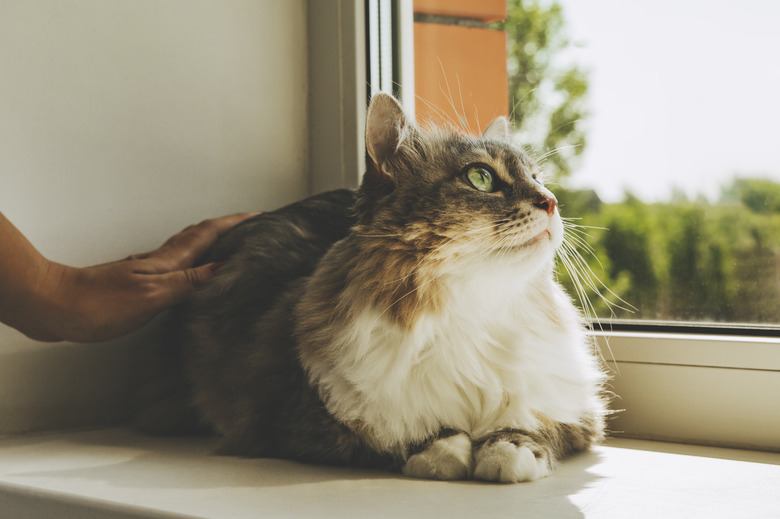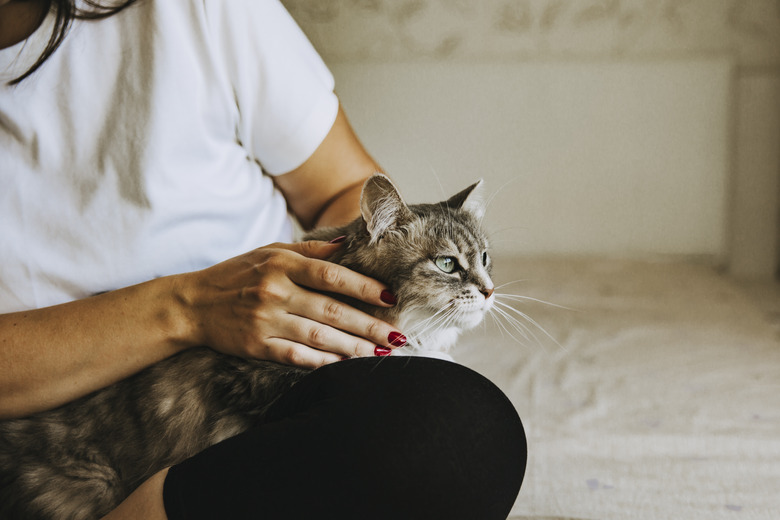How To Get Rid Of Mucus Buildup In Cats
Upper respiratory infections (URIs) are common in cats. The symptoms of a URI can make it difficult for your cat to smell and breathe. If your cat's symptoms are mild, it may be OK to watch your cat for a few days at home. There are several things you can do at home to reduce mucous buildup and help your cat breathe easier.
Upper respiratory infections in cats
Upper respiratory infections in cats
Sneezing, nasal discharge, and discharge from the eyes are common symptoms of upper respiratory infections in cats. Other signs of an upper respiratory infection can include loss of appetite, lethargy, mouth ulcers, squinting, enlarged lymph nodes, and fever.
Viruses and bacteria can cause upper respiratory infections in cats. The most common cat viruses that cause URIs are feline herpesvirus type-1 and feline calcivirus. The most common bacteria responsible for URIs in cats are Chlamydophila felis and Bordetella bronchiseptica.
Using saline and humidifiers
Using saline and humidifiers
Many people will do saline rinses when they experience sinus problems. While this is obviously not practical to do at home for your cat, you can use plain, non-medicated saline to help thin your cat's mucus. Saline will help thin mucus and stimulate sneezing, which expels bacteria and mucus. Tip the saline bottle upside down to put one to two drops of saline onto each of your cat's nostrils. You can apply saline to your cat's nostrils once or twice a day while he has an upper respiratory infection.
Cold, dry air causes mucus to stick to nasal passages. A humidifier can help your cat breathe easier by keeping nasal passages open. If you don't have a humidifier, you can take your cat into the bathroom with you while you take a shower.
Hydration helps with cat phlegm
Hydration helps with cat phlegm
Drinking more water helps keep cat mucus thin, which helps prevent it from sticking to your cat's nasal passages. While you may not be able to explain to your cat why it's important for her to drink more water, you can encourage your cat to drink more.
Place several water bowls around your house and keep them full of fresh, clean water. Many cats like drinking from a running source of water. You can purchase a pet fountain to provide your cat with a constant, running source of fresh water.
You can mix a little water into your cat's canned or dry food at mealtime. Many cats do not like drinking near their dining area, so make sure you place bowls of water away from your cat's food bowl. Some cats will drink more water if it's flavored. Try giving your cat a little tuna water or chicken broth. You can give tuna water or chicken broth by itself or dilute it with a little water.
When to take your cat to the vet
When to take your cat to the vet
As long as your cat's symptoms are mild and only last a couple of days, it is probably OK to keep an eye on him at home. However, you should take your cat to the vet if his sneezing or nasal discharge increases, if the consistency or color of the nasal discharge changes, if he has noisy breathing or difficulty breathing, if he loses his appetite, or if his symptoms persist beyond a few days.
You should also consult with your veterinarian if your cat has any symptoms in addition to nasal congestion and sneezing, such as vomiting, lethargy, eye discharge, or coughing.

